The Würzburg Residence (Würzburg Residenz) is an architectural superstar. Hailed as one of the most beautiful palaces in Europe, this Baroque beauty is a UNESCO World Heritage Site and a must-see for history enthusiasts and casual travellers alike.
Step back into an age of elegance with my guide to visiting the Würzburg Residence.
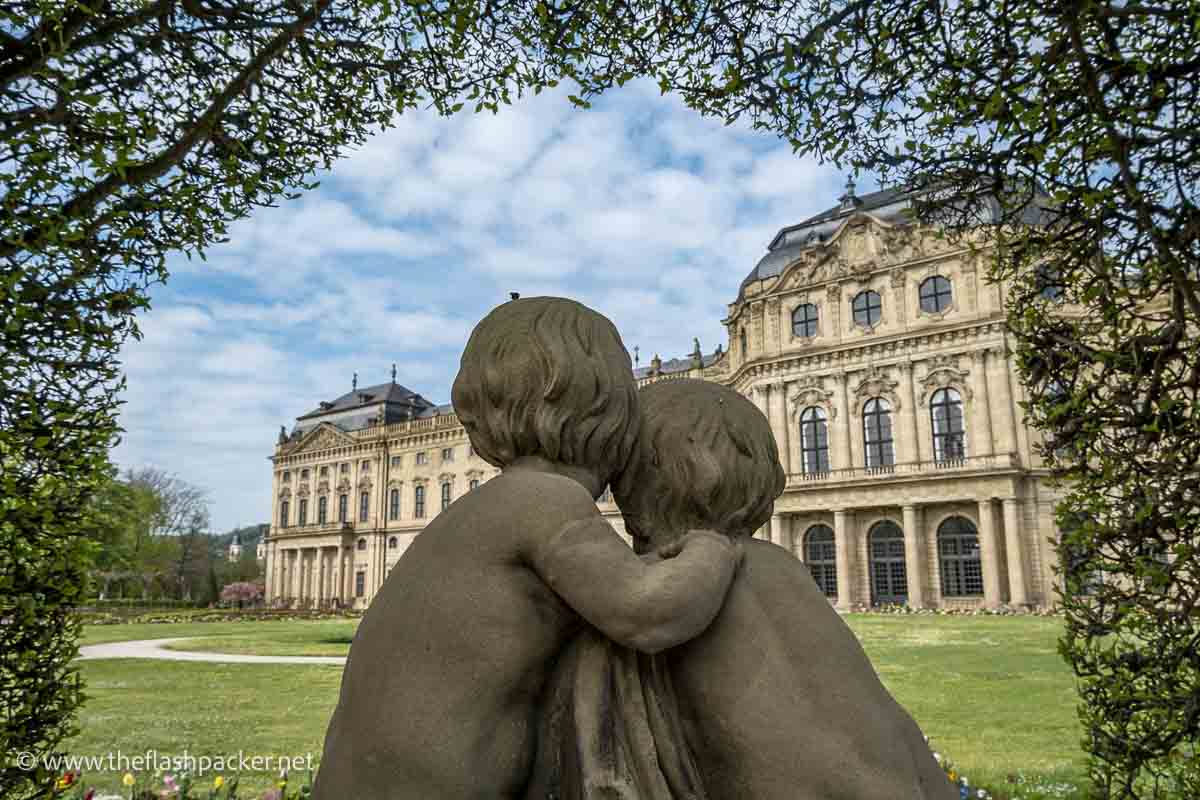
A Brief History
The Würzburg Residence was built to impress. Sometimes called the “German Versailles”, Napoleon described it as “the most beautiful parsonage in Europe”.
When Johann Philipp Franz of Schönborn became Prince-Bishop of Würzburg in 1719, he commissioned the then-unknown Balthasar Neumann to design a “palace of all palaces”. Neumann dutifully obliged and over 60 years transformed a shell of a palace into a Baroque masterpiece, employing the talent of the leading European artists and architects of the time.
Its glory days were short-lived. In 1802-3, secularisation dissolved the bishopric and the Residence became a secondary palace for the Bavarian kings. Following extensive damage from the WWII bombing raid of March 16 1945, decades-long reconstruction was completed in 1987.
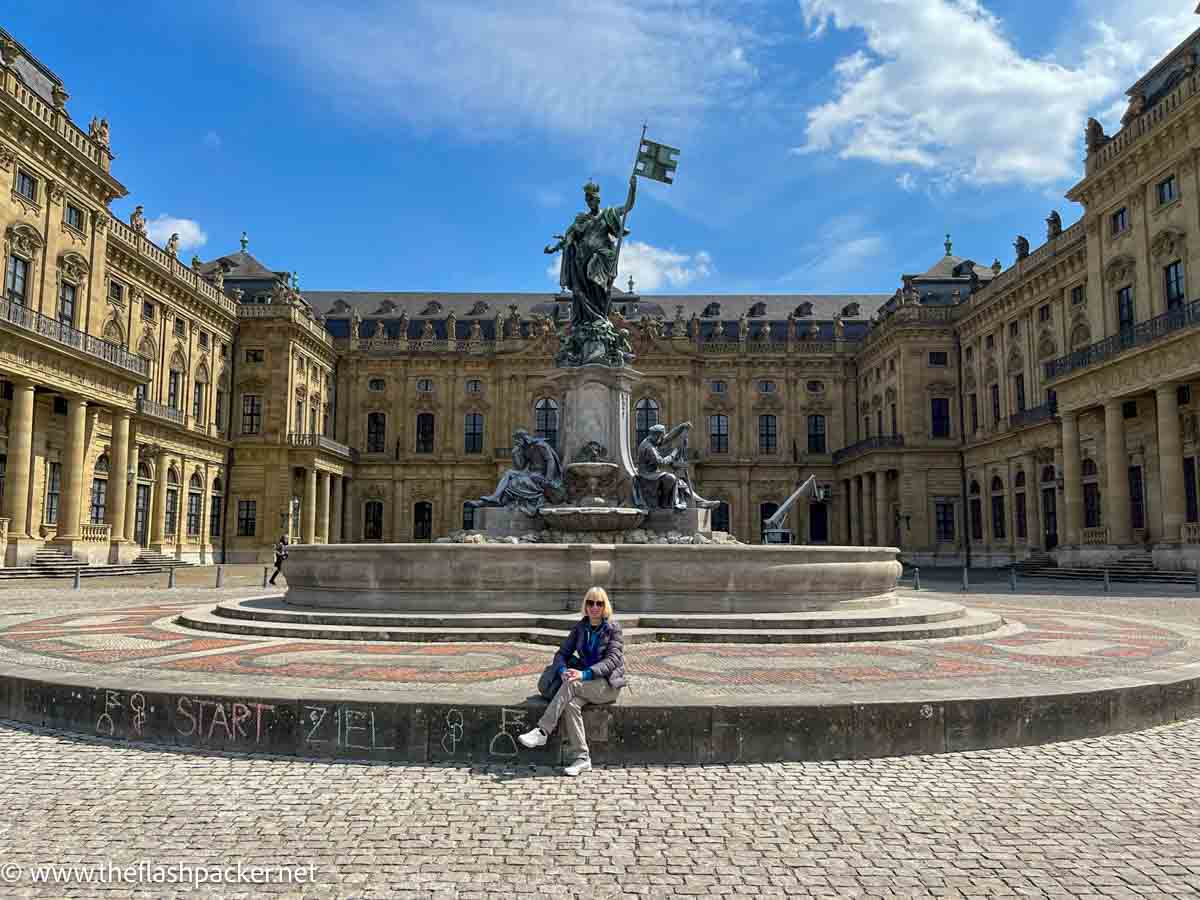
Visiting the Würzburg Residence: Tips & Practical Information
Opening hours & ticket price
April-October: daily 9 am – 6 pm
November-March: daily 10 am – 4.30 pm
Closed on January 1st, Shrove Tuesday, 24th, 25th and 31st December.
The gardens are open daily until dusk or 8 pm at the latest
Although it is free to visit the Court Church and gardens – and I strongly recommend you do – it costs €9 to visit the palace.
You can check current opening times and ticket prices here.
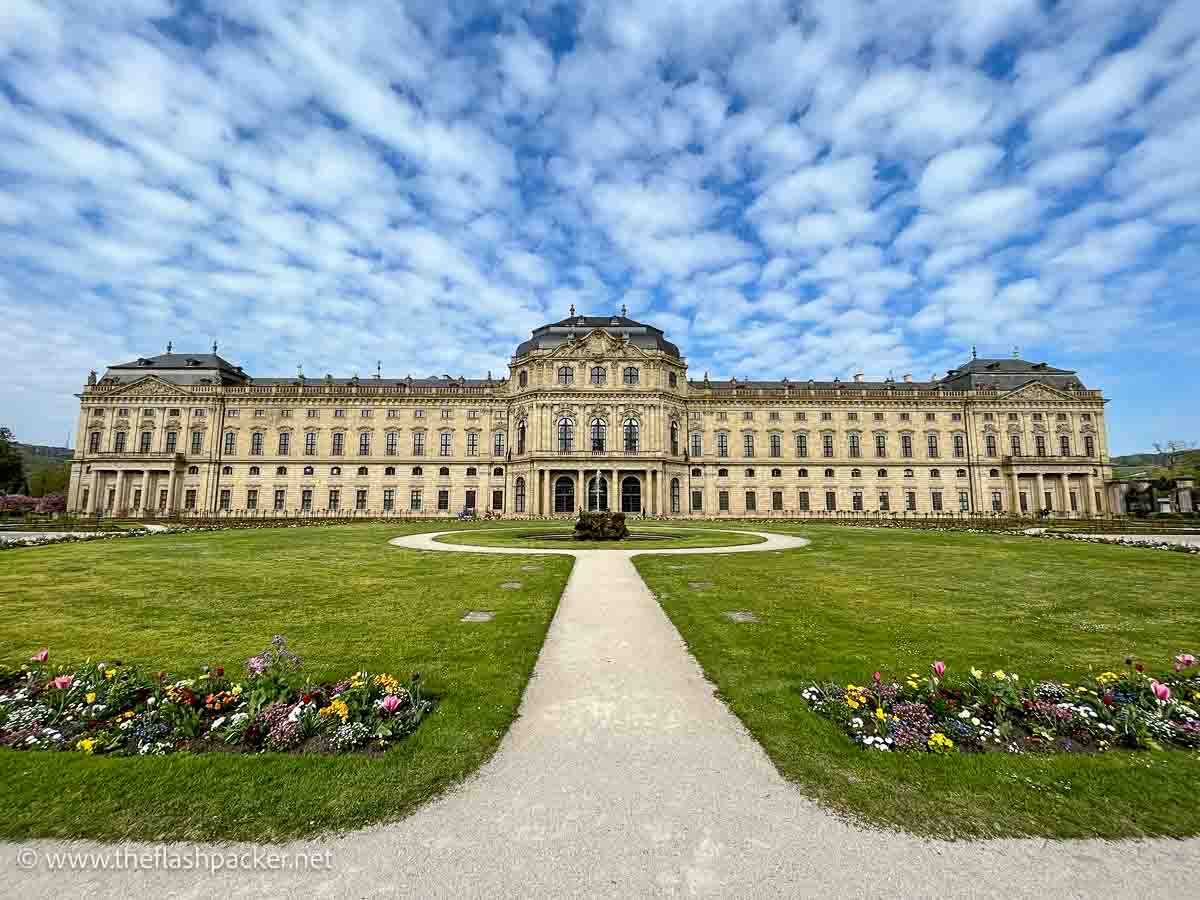
Guided tours
I suggest timing your visit with one of the guided tours included in the entrance ticket. These are offered twice a day in English at 11 am and 3 pm.
This excellent tour is 35 minutes long and focuses on the Great Staircase, White Hall and Imperial Hall. After the tour, you are free to explore the rest of the Residence open to the public.
Getting there
Walking from the main train station to the Würzburg Residence takes around 15 minutes. It is also served by a number of buses and trams 1,3 and 5 (direction “Dom”).
Its address is Residenzplatz 2, 97070 Würzburg.
Other useful information
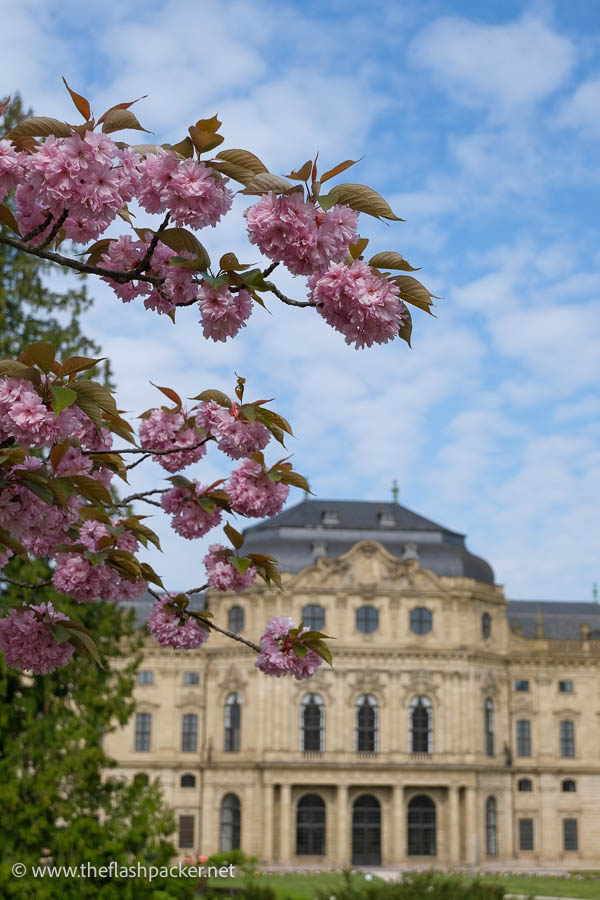
What to Expect From Your Visit
I made the Residence my first stop on a sunny April day in Würzburg, exploring the gardens before joining the tour (you don’t need to pre-book). After the tour I continued exploring the palace’s rooms, finishing my visit at the Court Chapel.
Compared with other UNESCO sites I have visited, it was joyfully uncrowded and relaxed.
Garden Hall
Our small group congregated in the Garden Room, waiting for the tour to start. Connecting the palace with the Court Gardens, this light and airy room has lively frescoes painted by Johann Zick.
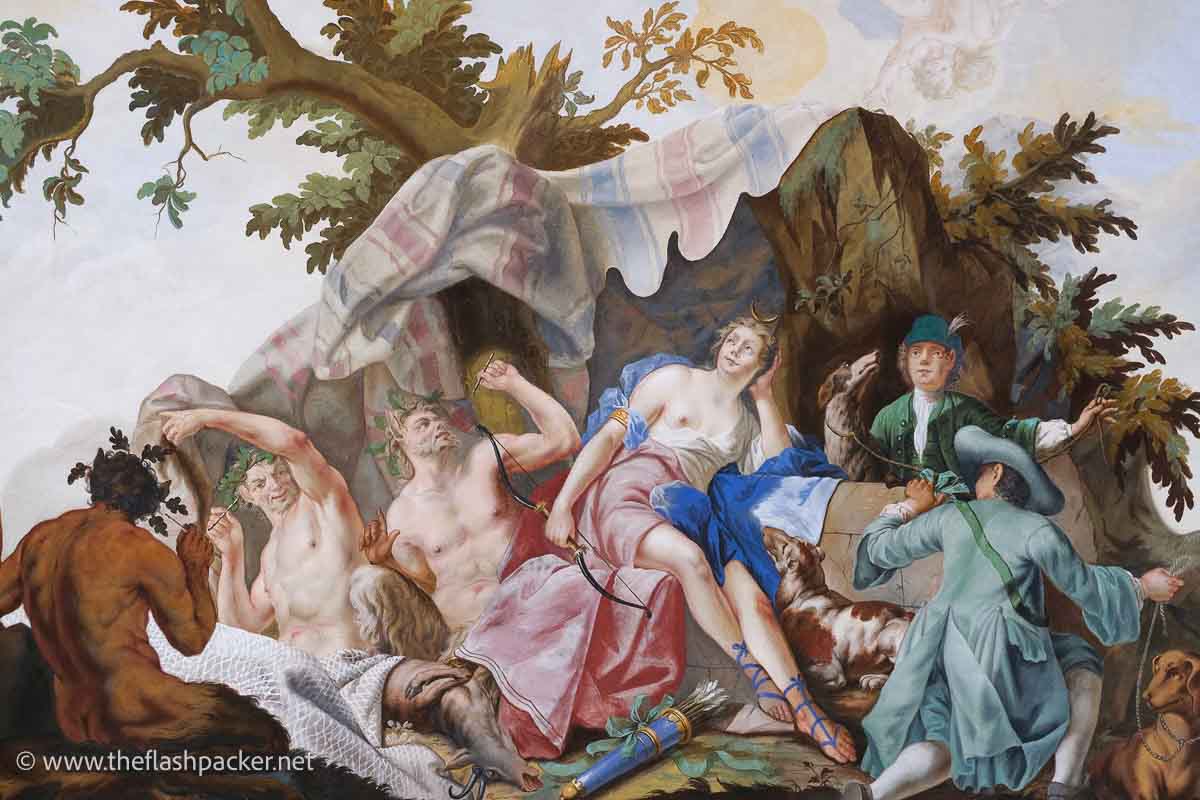
Grand Staircase
This architectural masterpiece marked the beginning of the guided tour.
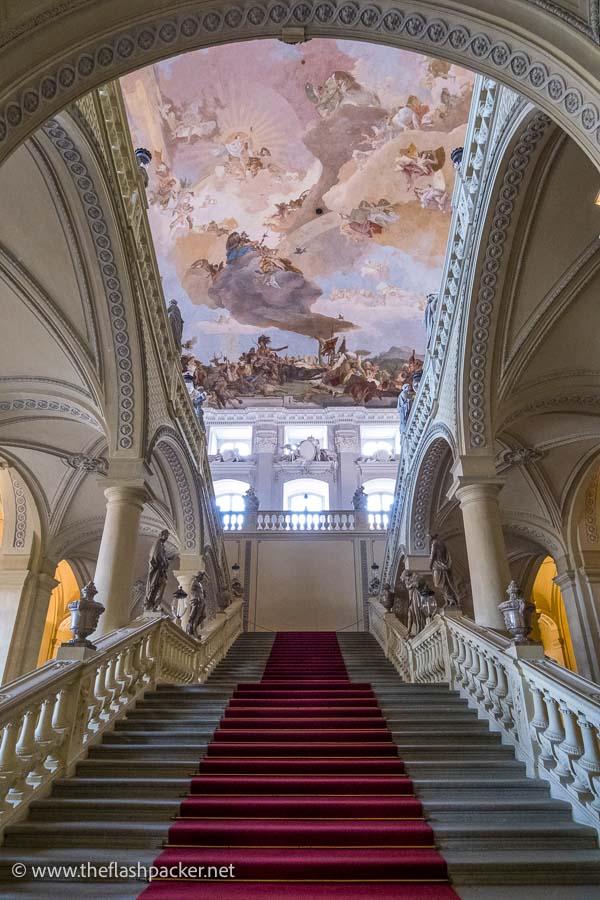
As you climb its low steps – all the better for those elegant ladies to glide up – more and more of Neumann’s vaulted ceiling slowly reveals itself.
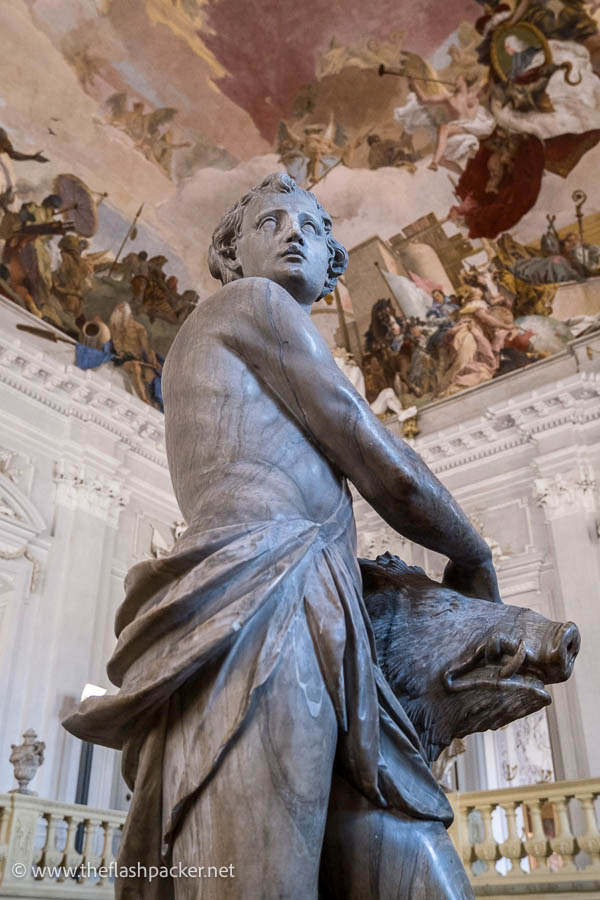
The Venetian Rococo painter Giovanni Battista Tiepolo created its world-famous ceiling fresco in 1752/3. It represents the four known continents of the world – Europe, Asia, America and Africa – with the Würzburg court depicted at the centre of arts in Europe. I loved that these paintings reflected the worldview of 18th-century Europe.
With its upside-down ears, Asia’s elephant looks ever-so-slightly wrong (Tiepolo was guessing what one looked like). Africa also has imagined animals, based on second-hand reports, and features a camel and frankincense-wafting servant.
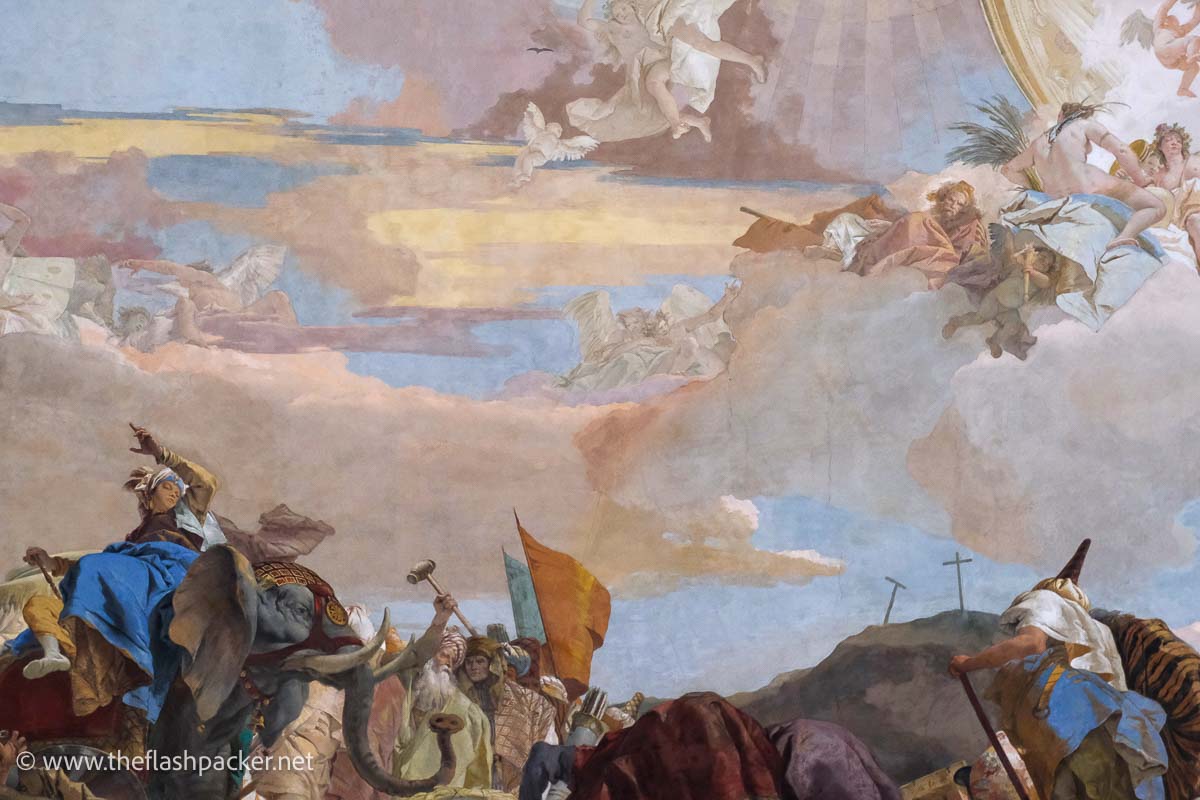
America is – well – uncivilised. Sitting in the buff with feathers in her hair, she is served hot chocolate, a favourite import for Europeans back then.
Europe is the largest and busiest fresco, designed by Tiepolo to showcase its superiority over the other continents. It includes a self-portrait of the artist and his son who bizarrely looks older than him.
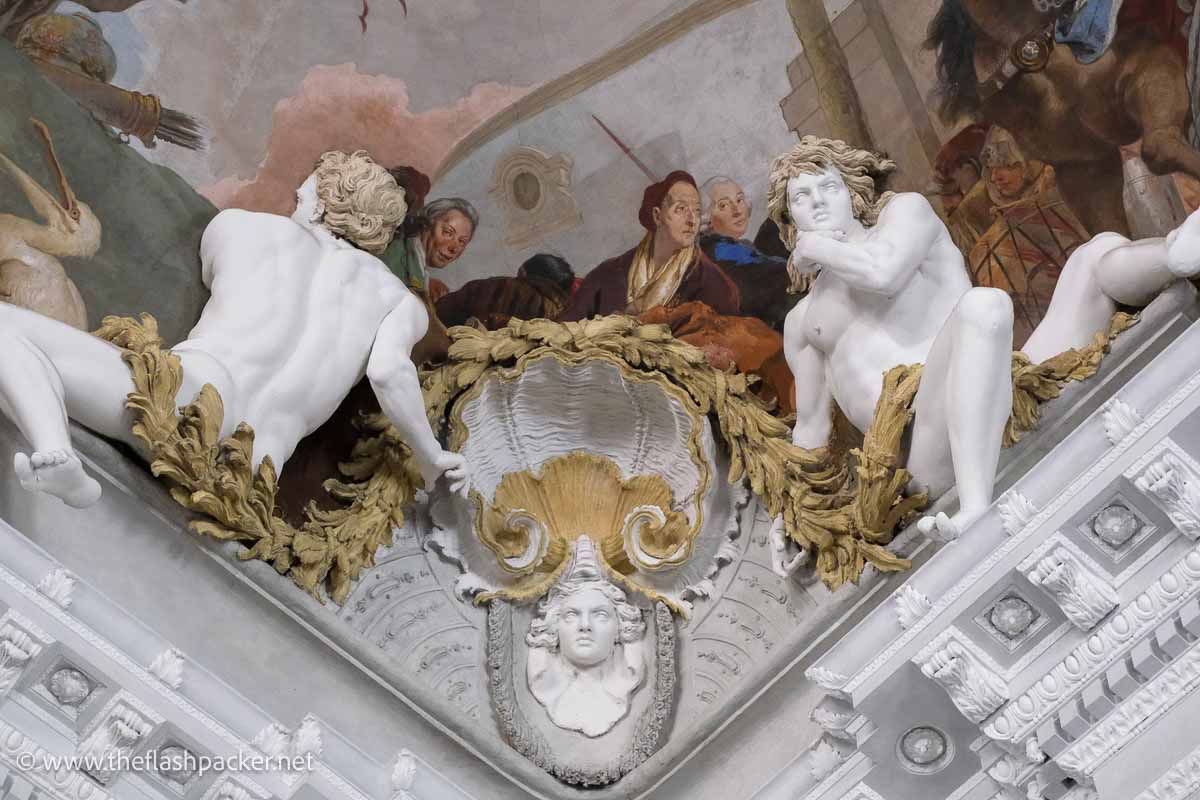
White Room
Think of the White Room as a palate cleanser between the exuberance of the Grand Staircase and the Baroque splendour of the Imperial Hall.
Antonio Bossi’s grey stucco decorations– the room isn’t actually white – have an armour and weapons theme, befitting a room that once guarded the entrance to the prince-bishop’s digs. I loved the cherubs on the stove, representing the four seasons.
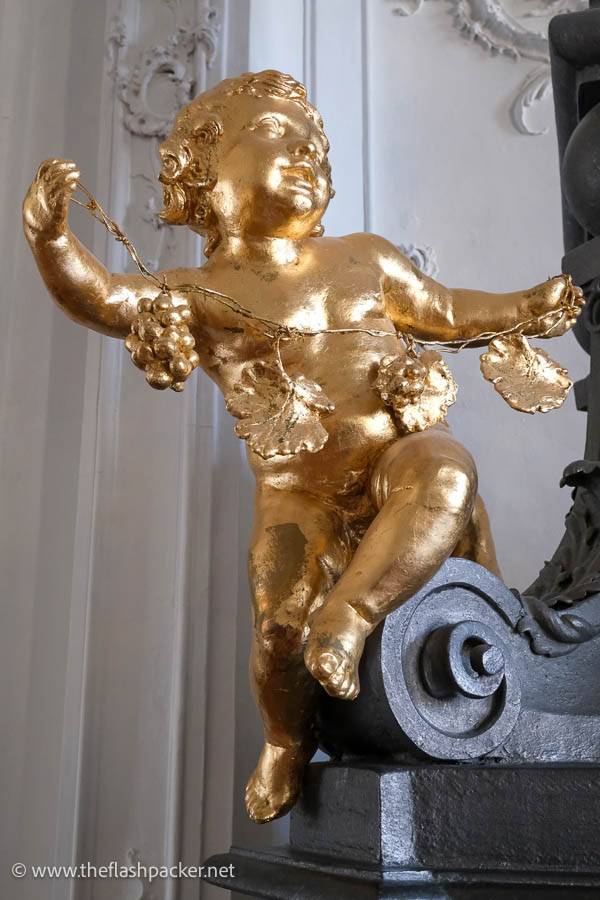
Imperial Hall
The Imperial Hall is a giddily opulent synthesis of Baroque art created by Neumann’s architecture, Tiepolo’s frescoes and Bossi’s stucco work. Thinks of it as the Würzburg Residence’s greatest hits.
Tiepolo was the master of 3-D illusion and his figures almost jump out of their flat 2-D surfaces in this room. The subjects of his paintings speak of the power and wealth of the prince-bishop.
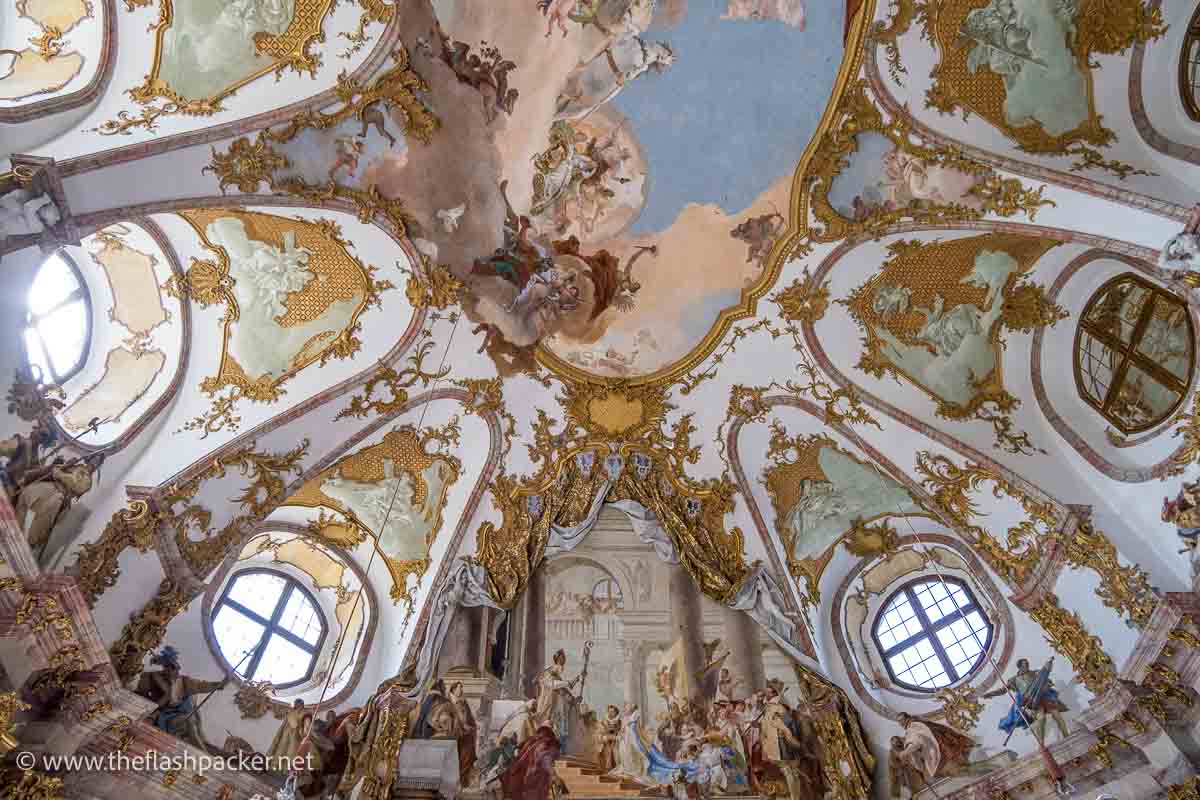
The guided tour ended here, leaving me to visit the Residence’s other public areas under my own steam. I explored the North Wing first, followed by the South Wing and Chapel. Most rooms had a short description in English.
Northern Apartments
This procession of lavish Baroque and Rococo rooms was reserved for the prince-bishop’s VIP guests.
The Green Lacquered Room has silver-leaf walls painted green and a gorgeous inlaid floor. Little Boney may not have slept in the bed in the Napoleon Room, but he did use its night tables.
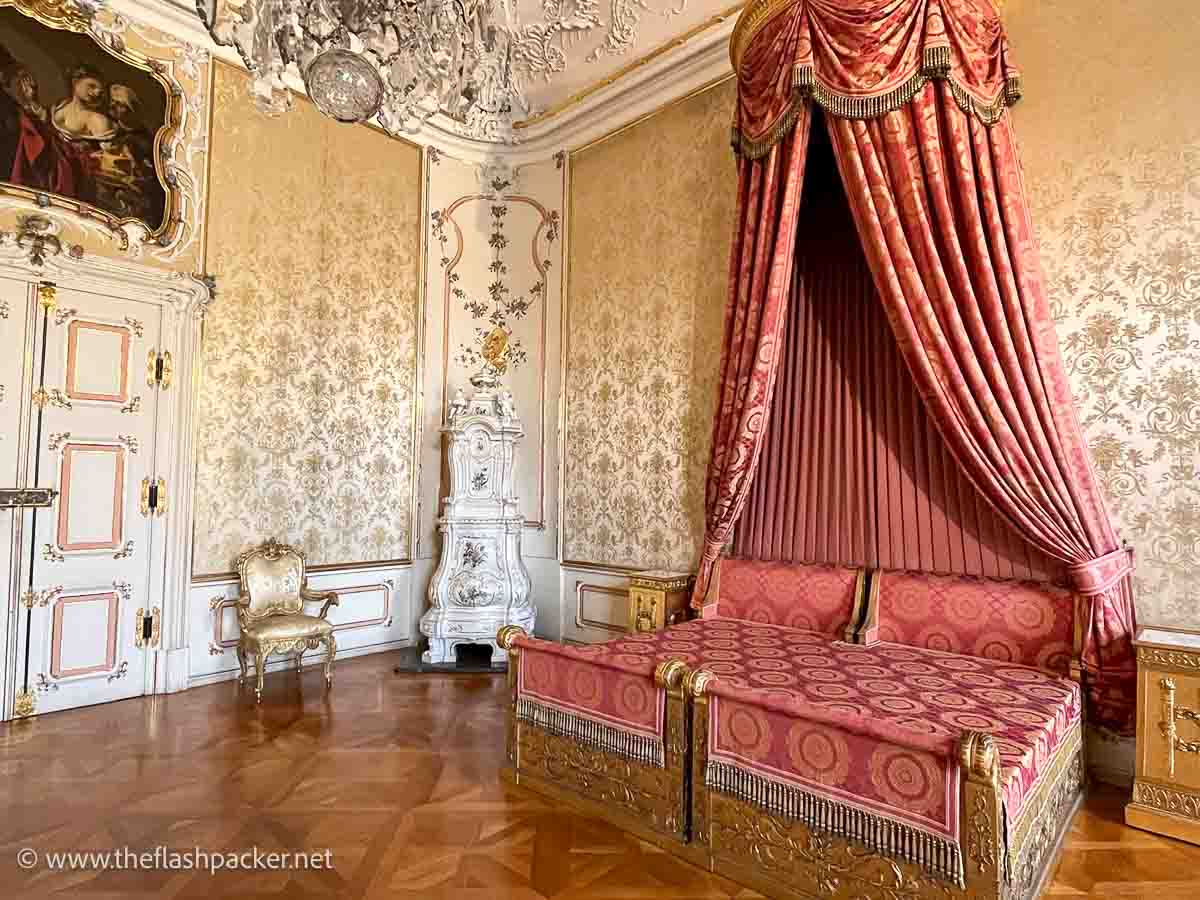
At the end of the North Wing, you reach the State Gallery. This is dedicated to Venetian painting, shaped by Titian, Tintoretto and Paolo Veronese.
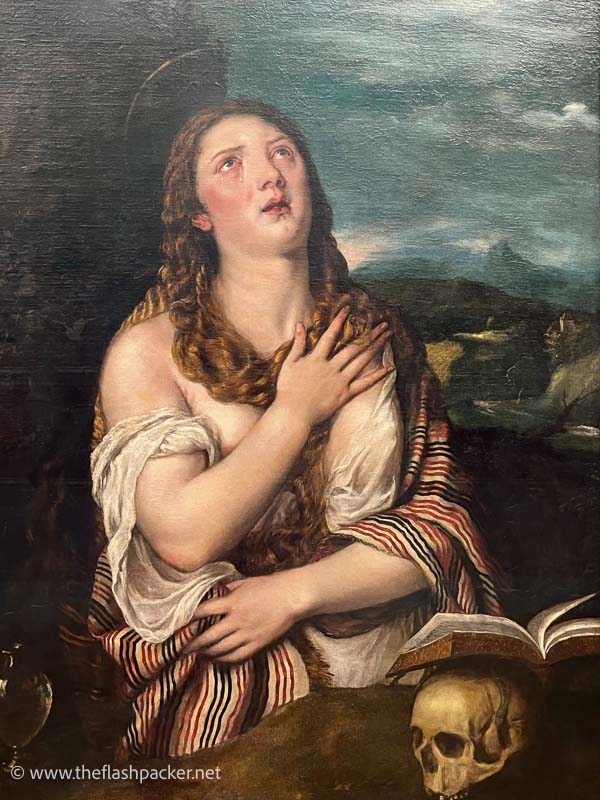
Mirror Cabinet
The equally sumptuous southern apartments have the most bling room in the palace, the Mirror Cabinet where the prince-bishop showcased his wealth. Featuring six pounds of gold leaf, an allegory of the four continents (again) and 600 mirrors, gaudy doesn’t begin to describe it.
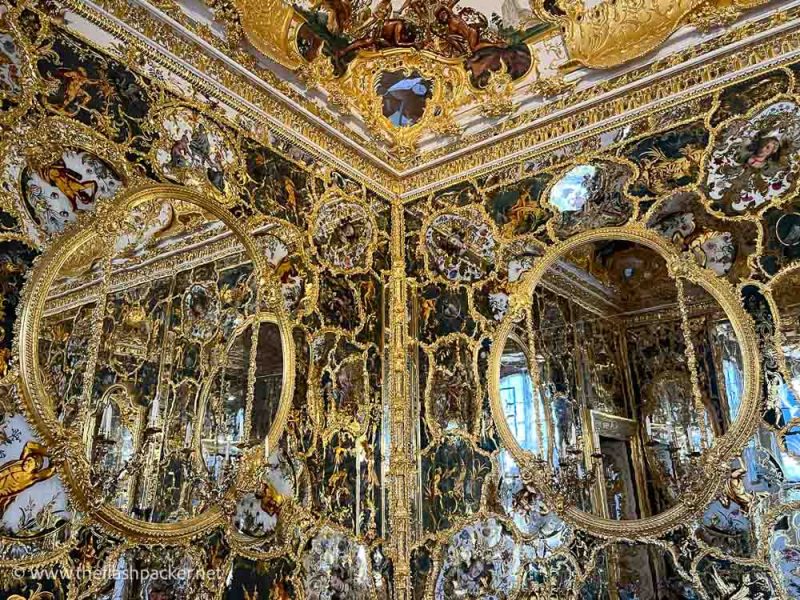
It was destroyed during WWII and recreated between 1979 and 1987 from mirror fragments, colour slides and a watercolour by Georg Dehn. Whether it’s your taste or not, it’s a near-miraculous restoration.
As you make your way to the Court Church, spend a little time in the Documentation Room. This chronicles the destruction of the Würzburg Residence and its restoration through objects, photos and short film clips. It’s fascinating stuff.
Court Church (Hofkirche)
This curvy Baroque and Rococo chapel in a rectangular shell is tucked into the southwest corner of the Residence and is reached by an entrance in the interior courtyard.
Neumann created light and symmetry with mirrors and hidden windows. The gold leaf is real; the “marble” columns aren’t. Although they look like the real deal, they are made from plaster mixed with pigment which was then polished.
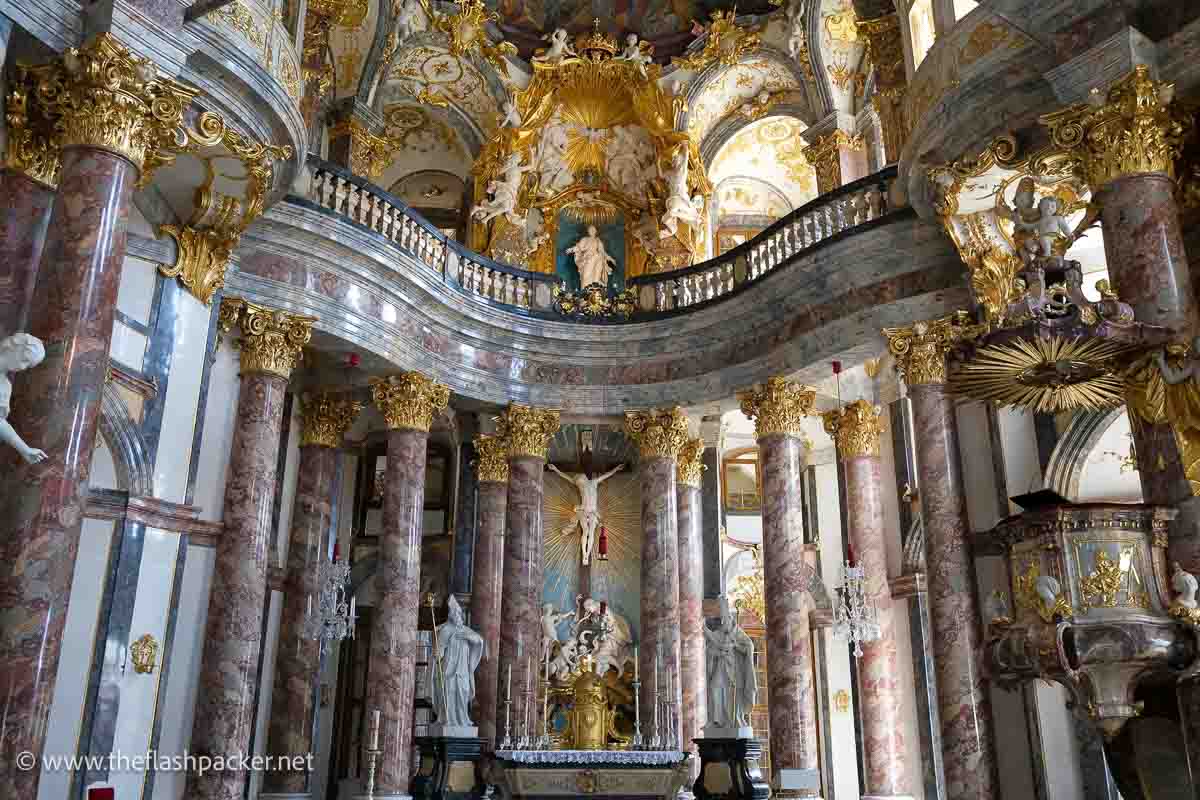
Once again, Tiepolo and Bossi helped him with the chapel’s interior decoration. The pulpit and Teipolo’s frescoes are outstanding.
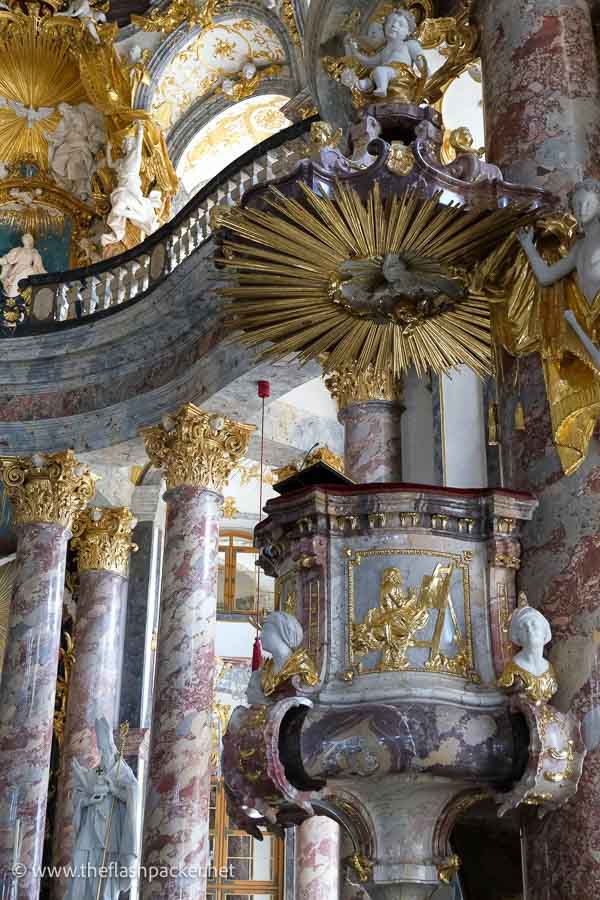
Court Gardens
Embracing the palace, the Court Gardens form a wonderful park. When I arrived, a handful of locals were enjoying the balmy spring morning.
The South Garden is just inside the gate. This rhapsody in symmetry has a central fountain, sculptures and conical 18th-century yew trees.
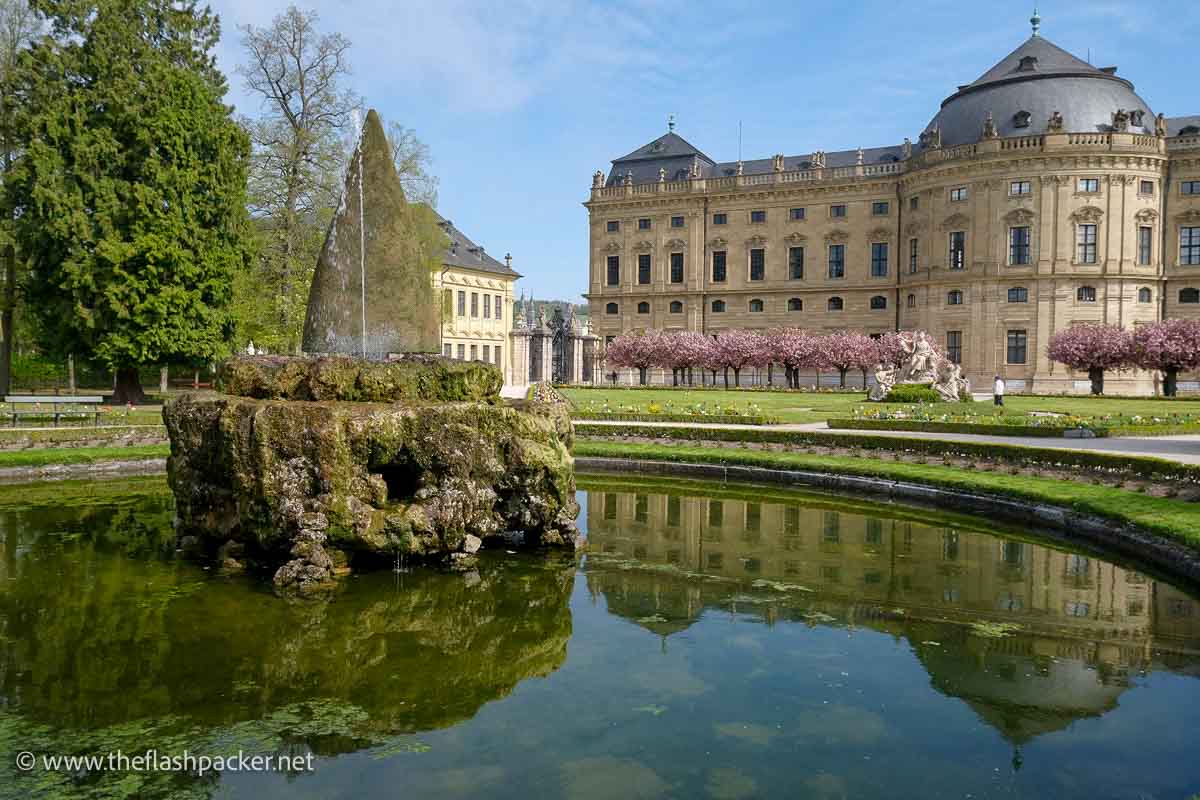
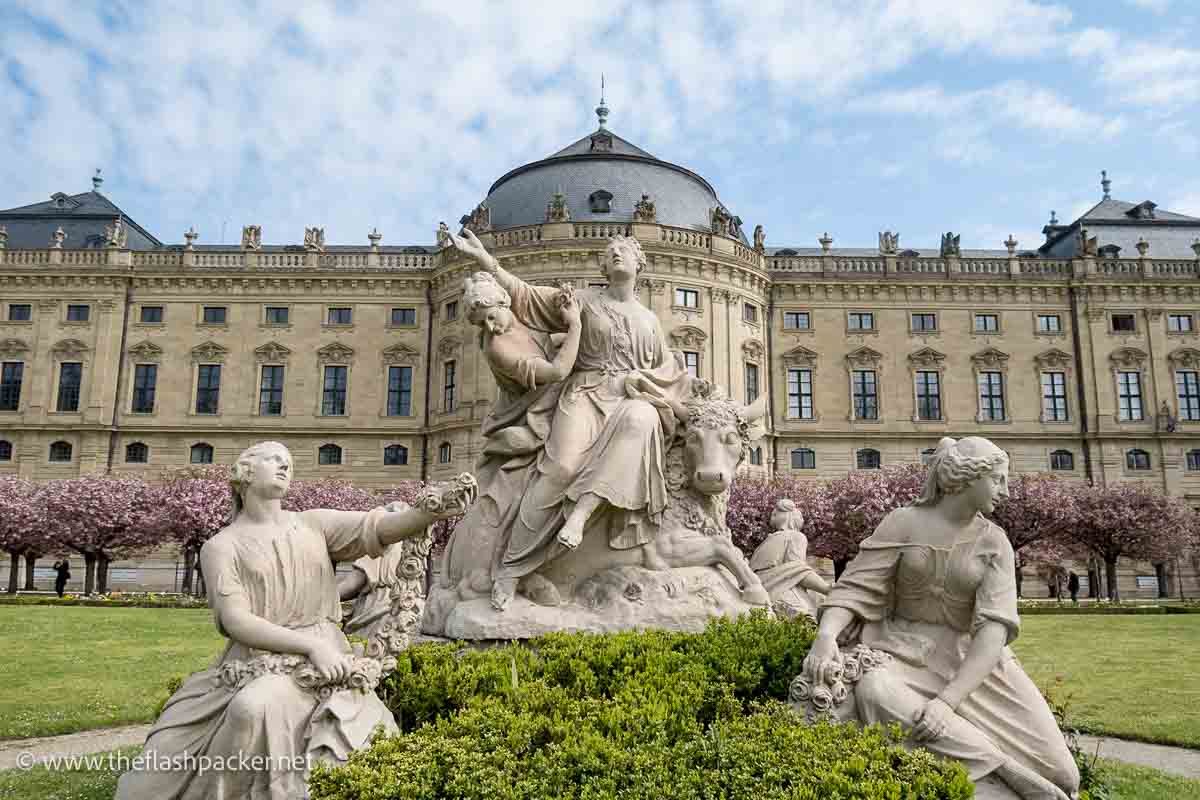
The terraced East Garden resembles an amphitheatre and has wonderful sculptures of playful cherubs punctuating its upper levels.
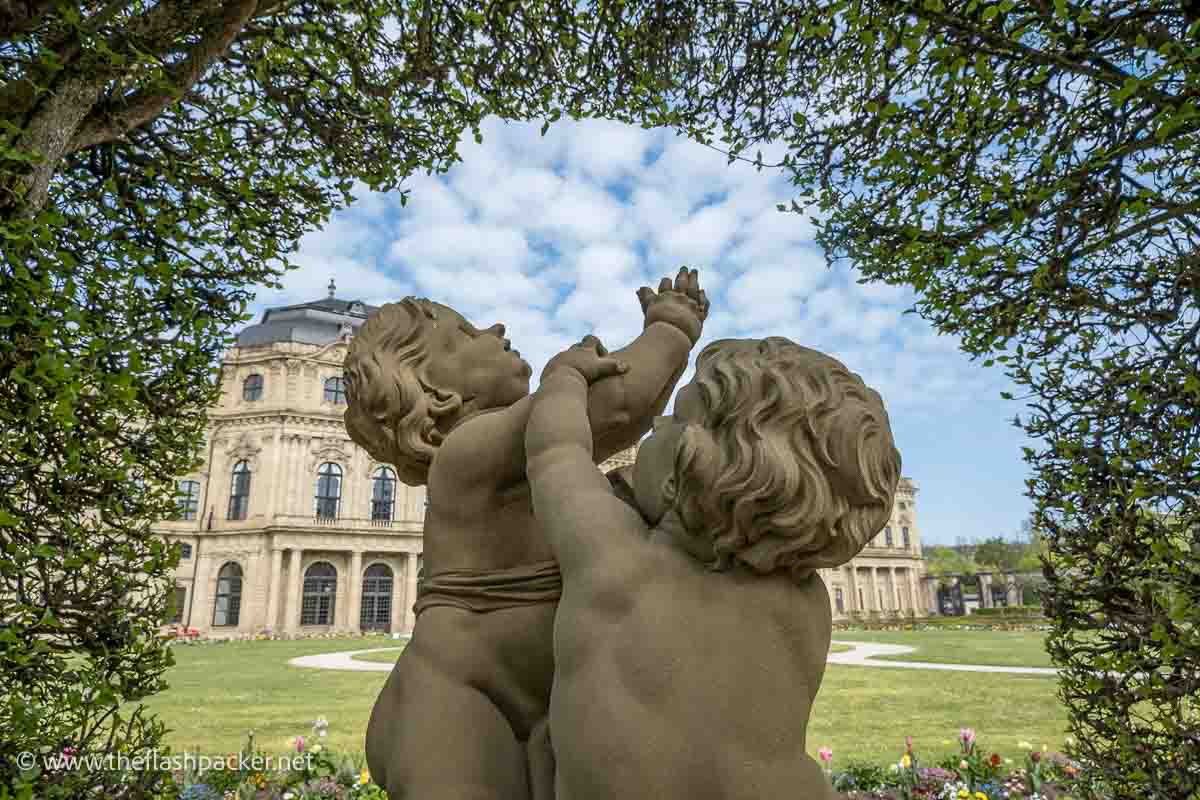
Where to next?
And that’s a wrap. I hope you have found my guide to the Würzburg Residence helpful and have a wonderful visit. It was one of my highlights of this visit to Germany.
If you want to see more of this lovely city, I have written a guide to spending a day in Würzburg. Before you leave, check out a few of my other guides to beautiful Bavaria:
- A Perfect Day in Nuremberg Old Town: Itinerary & Self-Guided Walking Tour
- 6 Magical Day Trips from Nuremberg by Train
- One Day in Rothenburg ob der Tauber: A Self-Guided Walking Tour
- Why You Should Visit Bamberg: A Bavarian Beauty
- Top 10 Things to Do in Passau: Bavaria’s Venice
Happy travels!

About Bridget
Bridget Coleman has been a passionate traveller for more than 30 years. She has visited 70+ countries, most as a solo traveller.
Articles on this site reflect her first-hand experiences.
To get in touch, email her at hello@theflashpacker.net or follow her on social media.
